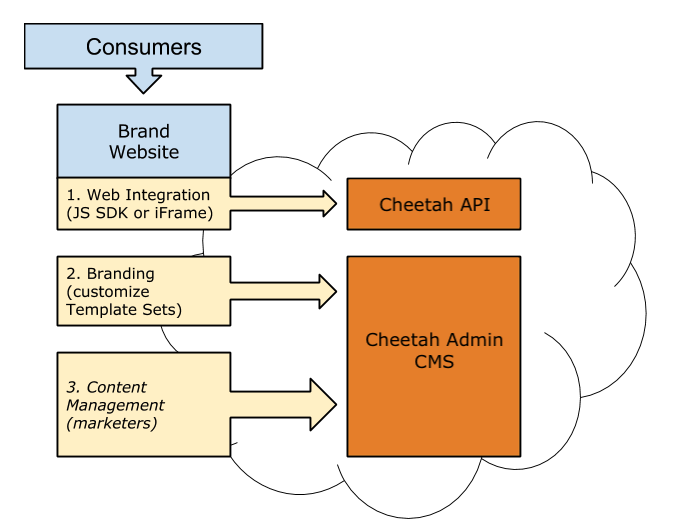The intended audience of this document is developers with a good working knowledge of JavaScript. The purpose of this document is to guide developers in enhancing their brand website to display loyalty content such as challenges, offers, rewards and member profiles from Cheetah Loyalty.
Some backend integration may be necessary if deeper integrations such as SSO are desired. Creation of branded responsive templates will require CSS design skills unless outsourced to a design firm.
Overview
Customers want to show loyalty content such as offers, challenges, rewards, news, member profiles and member preferences on their brand websites. This is accomplished in three parts: web integration, branding, and content management.

-
Web Integration involves adding snippets of JavaScript to the brand website, using the Cheetah JS SDK, which connects the website to the Cheetah API. The Cheetah JS SDK provides numerous widgets for showing portions of the member profile, such as challenges, offers, rewards, news posts, gallery photos, activities, and member summary information. Some customers may also want to implement SSO, which may require support from a backend developer.
-
Branding involves customizing Cheetah Template Sets to match the brand style. For example, the customer can modify the brand-neutral Template Sets that Cheetah provides to use their brand color palettes and screen layouts. This may require web developer support to design the template CSS, but this work could be outsourced to a design firm.
-
Content Management involves creating Challenges, Rewards, News, and other content items. This is an ongoing content creation process by marketers that should not require developer support. This is not discussed in depth in this document, but all content is entered in the Cheetah CMS, which is part of the admin console.
Next: Getting Started
